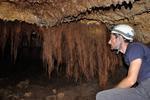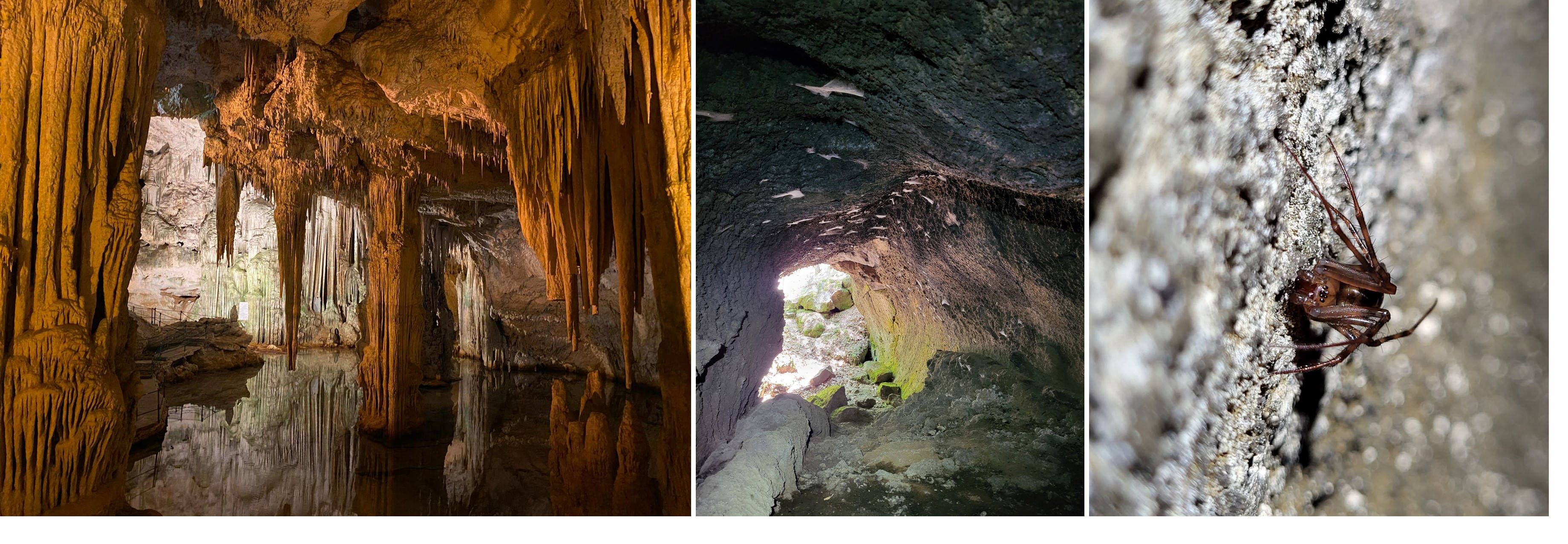Giuseppe Nicolosi
- SCIENZE BIOLOGICHE E BIOTECNOLOGIE APPLICATE
- Phd: 35th cycle
- Department of Life Sciences and Systems Biology
- Matriculation number: 911248

Phd thesis

The Effects of Human Impacts on Cave Ecosystems and Subterranean Biodiversity
Subterranean ecosystems are considered relatively more vulnerable than other ecosystems due to their high stability relative to their surrounding surface environments. They are susceptible to numerous impacts often related to human activities, which make arduous the persistence of sensitive animal populations. Moreover, the most specialized organisms living therein are generally restricted geographically and numerically rare, making them vulnerable to even relatively minor disturbances.
As fragile and confined environments, caves are susceptible to numerous human impacts, such as indirect ones deriving from surface activities or direct ones, mostly related to the human presence in the cave. These threats include universal threats such as global warming, whereas others should be recognized as more regional or local threats.
The thesis aims to explore some of the main threats affecting subterranean habitats by developing different case studies at a different scale in both karst and volcanic caves, encompassing both emerging and unexplored threats. The main threats considered in this work are (i) the recreational use of caves, (ii) urbanization, agricultural and industrial activities, (iii) global climate change, and (iv) the presence of non-native species introductions.
The threat related to the “recreational use of caves” was investigated across different taxa at the ecosystem scale in three different case studies. Firstly, we tested the effect of the artificial lighting regime in two Italian Show Caves located in the Liguria region. According to our results, the duration of artificial illumination in caves significatively influences the growth of lampenflora – i.e., photosynthetic microorganisms forming biofilms on cave speleothems, causing structural and aesthetic damage – especially in show caves experiencing high touristic use. Second, we tested whether the presence of visitors may affect the abundance of cave-dwelling arthropods, using the isopod Armadillidium lagrecai as a model organism in the semi-touristic Monello karst cave, in Sicily. The species abundance seems to solely increase with increasing temperature and humidity with no effect due to the presence of visitors. Third, we provided a first insight into the microbial diversity of the Etna volcano lava tubes and revealed the presence of a highly diversified microbial community, including a number of taxa related to the anthropic disturbance.
Regarding “urbanization, agricultural, and industrial activities” we showed that the local and unique biological assemblage living in Monte Conca sinkhole (Sicily) supported by an autochthonous food source, is highly threatened by surface agricultural activities, which are causing drastic alteration of the seasonal water regime, also determining the entrance of several contaminants of anthropogenic origin.
As for “global warming”, future predictions developed by SDM to predict remarkable impacts at the regional scale on the survival of the cave-dwelling spider Meta menardi, which was documented on Mount Etna for the first time.
Finally, we reviewed the threat of “non-native species introductions” globally by means of bibliometric analysis. The literature search revealed the presence of 246 alien species listed in the literature encompassing several taxa. Our data suggested that only a limited number of alien species may represent a real threat to subterranean ecosystems and to the species living therein, probably due to the strong ecological filter imposed by subterranean systems. However, future studies are recommended to deepen the understanding of invasiveness in subterranean habitats.
Despite the growing literature concerning the subterranean biome and the extent of potential threats, our results revealed that some threats result still largely unexplored. Future investigations are recommended to provide practical suggestions and future directions for management practices.
List of papers
This thesis is based on the following original publications and manuscripts:
- Piano, E., Nicolosi, G., & Isaia, M. 2021. Modulating lighting regime favours a sustainable use of show caves: A case study in NW-Italy. Journal for Nature Conservation, 64(3):126075
- Nicolosi, G., Mammola, S., Costanzo, S., Sabella, G., Cirrincione, R., Signorello, G., & Isaia, M. 2021. Microhabitat selection of a Sicilian subterranean woodlouse and its implications for cave management. International Journal of Speleology, 50(1):53-63.
- Nicolosi, G., Gonzalez-Pimentel, J.L., Piano, E., Isaia, M. & Miller, A.Z. 2023. First insights into the microbial diversity of Mount Etna volcanic caves. Microbial Ecology, 1-14.
- Nicolosi, G., Galdenzi, S., Messina, M. A., Miller, A. Z., Petralia, S., Sarbu, S. M., & Isaia, M. 2022. Sulfidic Habitats in the Gypsum Karst System of Monte Conca (Italy) Host a Chemoautotrophically Supported Invertebrate Community. International Journal of Environmental Research and Public Health, 19(5), 2671.
- Nicolosi, G., Piano, E. & Isaia, M. 2023. Habitat preference of Meta menardi and M. bourneti (Araneae, Tetragnathidae) along the altitudinal gradient of Mount Etna (Sicily, S–Italy). Journal of Arachnology (accepted).
- Nicolosi, G., Piano, E. & Isaia, M. Future shifts of cave-dwelling Meta spiders under the influence of global warming on Etna volcano, Sicily. Manuscript in preparation.
- Nicolosi, G., Mammola, S., Verbrugge, L. & Isaia, M. 2023. Aliens in caves: the global dimension of biological invasions in subterranean ecosystems. Biological Reviews (Early View).
Research activities
My research activities focus on the effects of anthropogenic disturbances on subterranean ecosystems and biodiversity.
I have a broad interest in biospeleology and, in particular, on the study of fauna in volcanic environments and anthropogenic threats to which this fauna is subjected.




